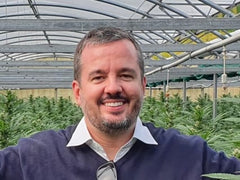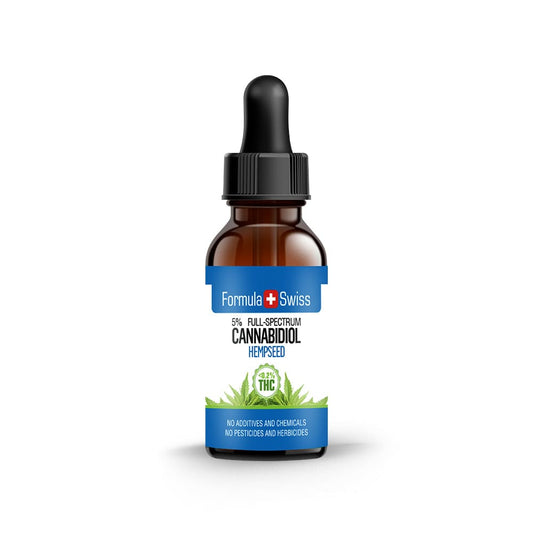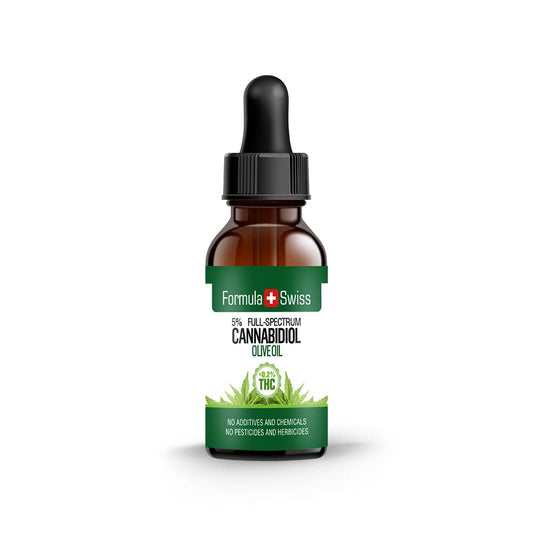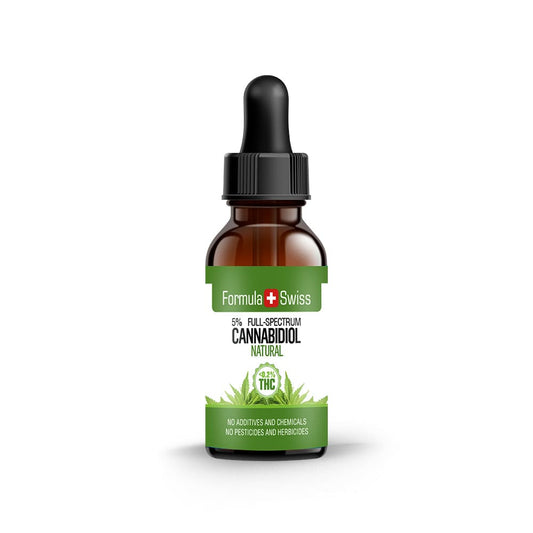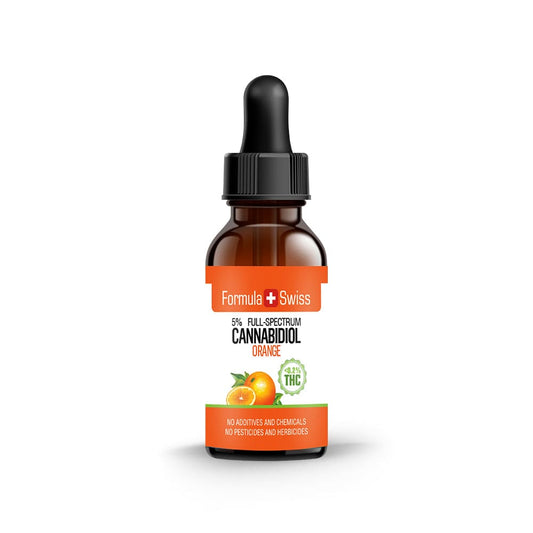Views on cannabis are shifting. Many people get confused about cannabis, marijuana, and hemp. These terms are often used together but have different meanings.
Laws and discussions show how complex these differences are. There are special rules for medical use. It's important to understand the classification of cannabis to know the rules and product categories.
As someone with years of experience in this industry, I've seen people use these terms wrongly. Cannabis, marijuana, and hemp mean different things. Each term has its own history and legal status. Exploring their meanings and origins can help clear up confusion. This knowledge is key to understanding these plants better.
Save up to 30% when you order your CBD oil today
Key takeaways
- Knowing the big differences between cannabis, marijuana, and hemp is key for accurate communication.
- Changes in laws show why it's important to get cannabis classification right.
- The words we use for cannabis come from history, law, and culture, affecting how we see these plants.
- Being clear about these terms helps fix misunderstandings and encourages more accurate understanding across the industry.
- Understanding the differences helps with interpreting the rules and social perceptions of these plants.
This article is provided for informational purposes only and does not relate to any of the products available in our webshop. For more information, please see our full disclaimer.
The fundamentals of cannabis classification
Understanding how cannabis is classified is essential to recognising its diverse applications. Cannabis sativa is notable for its broad range of uses, though its recognition varies across different regions.

Understanding the Cannabis sativa species
Cannabis sativa is a main type of cannabis, known for its tall height and slim leaves. It includes plants that can lead to both marijuana and hemp classifications. This makes it very versatile across industries.
Cannabis sativa is known for its wide range of strains, each with varying concentrations of THC and CBD. These differences allow for diverse applications and align with distinct industry standards.
Key components of cannabis plants
Cannabinoids are the key parts of cannabis plants. THC and CBD are the most well-known cannabinoids. THC is linked to psychoactive effects, while CBD is known for its non-intoxicating profile.
Cannabis contains more than 80 identified cannabinoids, each with unique characteristics. These distinctions continue to drive scientific research and inform industry discussions in various regions.
Learning about these basics shows how complex cannabis classification is. It also points out the key differences between the parts and types of cannabis, like Cannabis sativa. Clear classification supports regulators, researchers, and legal authorities.
Defining cannabis
The cannabis plant family includes many species and varieties, with Cannabis sativa being a key one. These plants are used for their psychoactive effects and industrial applications. Knowing the difference between them helps clarify cannabis classification and how laws apply.
The cannabis industry is growing, and groups like the Cannabis Control Commission are involved in setting rules. These rules aim to support safety, transparency, and fairness. Issues like unpaid fees highlight the importance of strict oversight.
Understanding the differences between cannabis plants supports their cultivation, classification, and broader industry considerations. Varieties with low THC content are typically used for industrial purposes, while those with higher THC levels are handled differently depending on local practices.
As discussions around cannabis continue, understanding how the plant is classified is valuable for the public, industry professionals, and policymakers.
Marijuana: Psychoactive varieties of cannabis
Marijuana comes from the Cannabis sativa plant and is known for its psychoactive effects. These effects come mainly from THC (tetrahydrocannabinol). THC is what produces the 'high' associated with marijuana and contributes to the varying effects of different strains.
The focus on marijuana is on its psychoactive potential. This sets it apart from other cannabis types that are associated with cannabinoids like CBD.

Characteristics of marijuana strains
There are many marijuana strains, each with distinct features such as aroma, flavour, and intensity of effects. THC levels can vary widely between strains. In some cases, the colour and smell may offer clues about potency.
People involved in cultivation or trade often look for strains that meet specific needs or preferences. The wide selection of available strains supports numerous product categories suited to varying market demands across different areas.
The role of THC in marijuana
THC is the primary psychoactive component of marijuana. It interacts with the body's endocannabinoid system. This interaction can affect mood, perception, and sensory response, and is often associated with euphoria or relaxation.
Understanding THC and its characteristics contributes to the broader understanding of the cannabis plant. Ongoing research continues to investigate the functions of THC and other cannabinoids within structured industry settings.
Order and save up to 30% on your CBD oil
Hemp: The industrial powerhouse
Industrial hemp is recognised for its range of applications and its role in sustainable production. Derived from Cannabis sativa, it is used in textiles, biodegradable plastics, and construction materials due to its low THC content and functional properties.

Uses of industrial hemp
Industrial hemp is used in products like paper, rope, and building materials such as hempcrete. Hemp seeds and oils are also applied in areas like cosmetics and personal care items, reflecting its diverse potential.
CBD content in hemp
Industrial hemp typically contains higher levels of CBD and minimal THC. This profile makes it a common choice for a range of non-intoxicating uses within structured industry contexts.
Hemp cultivation offers environmental advantages. It generally requires less water than other crops and can contribute nutrients back into the soil. It can also support deforestation reduction efforts due to its short harvest cycle.
| Product | Based on industrial hemp | Traditional materials |
|---|---|---|
| Textiles | Eco-friendly, durable | Often synthetic, less sustainable |
| Construction materials | Hempcrete - lightweight, insulating | Concrete - heavy, energy-intensive |
| Products | Hemp-based formulations | Chemical alternatives |
The various industrial uses and environmental contributions of hemp highlight its role in sustainable innovation. As practices shift toward environmentally responsible alternatives, hemp remains a viable option.
Understanding cannabis, marijuana, and hemp
Perspectives on cannabis differ widely across regions. Recognising the distinctions between cannabis, marijuana, and hemp is important, as these differences influence how they are approached and utilised.
In areas where marijuana is permitted, structured systems guide its sale and use, aiming to maintain standards and oversight. Hemp, due to its low THC content and industrial relevance, is often treated differently, leading to broader applications across various industries.

Where oversight frameworks are in place, processes are established to support responsible hemp production. These measures help distinguish hemp from marijuana in practical applications.
- Regions with structured cannabis markets implement cultivation practices that focus on quality and safety.
- There are often clear distinctions between recreational and controlled uses, which influence how businesses and services operate.
- In places where recreational use is allowed, guidelines typically address areas such as advertising, age restrictions, and designated use locations.
As the landscape evolves, staying informed about changes remains important. Adjustments to industry practices often reflect new research, shifting priorities, and broader discussions.
Key differences between cannabis, marijuana, and hemp
Recognising the differences between cannabis, marijuana, and hemp is essential. Each has distinct characteristics based on chemical composition, intended use, and how they are categorised across various contexts.
THC and CBD profiles: a comparative view
One of the main points of distinction between cannabis, marijuana, and hemp lies in their THC and CBD levels. Marijuana typically contains higher THC concentrations, known for their psychoactive properties. In contrast, hemp generally has very low THC levels, often below 0.3%, with comparatively higher CBD content. These differences influence their roles in different industries.
Agricultural and practical distinctions
Hemp and marijuana are cultivated with different goals in mind. Hemp is primarily grown for applications such as textiles, bio-based materials, and industrial products, usually on a larger scale and with low THC content. Marijuana cultivation focuses on enhancing THC levels and often involves more specialised growing techniques.
Hemp is commonly regarded as an industrial resource in many regions, with its usage shaped by its composition and practical benefits. Marijuana, due to its psychoactive profile, is managed differently, influencing its availability and applications.
| Cannabinoid | Marijuana | Hemp |
|---|---|---|
| THC | High | Low (<0.3%) |
| CBD | Variable | High |
| Recognition | Controlled in many areas | Widely accepted for industrial use |
These distinctions play a role in shaping broader conversations around cannabis. They influence perceptions, industry practices, and the way these plant types are understood and applied in different contexts.
The psychoactive effects of THC
THC is the primary psychoactive component in Cannabis sativa. It affects mental and sensory responses. This distinguishes it from CBD, which does not cause psychoactive effects.
Distinguishing psychoactive properties
When THC interacts with cannabinoid receptors in the brain, it activates a series of neural pathways. This can affect perception, mood, and cognition. THC primarily influences the brain’s reward systems, often leading to a shift in how a person feels or experiences stimuli.
This sets THC-rich plants like marijuana apart from hemp, which contains only trace levels of THC.
| Substance | THC content | Psychoactive effect |
|---|---|---|
| Marijuana | High (5-35%) | Strong psychoactive effects |
| Hemp | Low (<0.3%) | Minimal or no psychoactive effects |
This table outlines the contrast in THC levels and their psychoactive influence. Marijuana typically has higher THC content and is managed under more limited industry practices. Hemp, by contrast, is often used in materials and other non-psychoactive contexts.
What is THC (Tetrahydrocannabinol)?
Cannabis cultivation and strain development
Modern cannabis cultivation and strain development combine traditional horticulture with new techniques. This includes improvements in aroma, appearance, and cannabinoid profiles across Cannabis sativa strains.

One example of advanced cultivation is the use of bonsai mother plants. These are maintained to produce genetically consistent clones of Cannabis sativa. This approach helps preserve quality across large-scale harvests.
| Statistic | Detail |
|---|---|
| Bonsai mother plant lifespan | 3 to 15 years |
| Annual cutting yield (4 ft x 2 ft light) | Over 9500 cuttings |
| Cuttings per mother plant (per cycle) | 10 to 30 cuttings every 14 to 20 days |
| Nutrient feeding requirement | Half-strength, twice a month |
| Root pruning frequency | Once or twice a year |
This table shows how careful care of mother plants helps grow Cannabis sativa strains. By controlling light, nutrients, and pruning, growers can support strong propagation of specific cannabis strains.
Advanced strain development methods also support the creation of Cannabis sativa strains for defined uses. These modern approaches expand beyond traditional techniques. They reflect a focus on selective cultivation and sustainability in cannabis-related agriculture.
Advancements in cannabis cultivation and strain development play a key role in ensuring consistent quality within Cannabis sativa. These improvements also address the increasing demand for industrial and commercially produced items derived from the plant.
CBD: Non-psychoactive cannabis components
CBD is a prominent compound found in cannabis that does not produce psychoactive effects. It is distinct from THC, which can influence perception and mood. Due to its properties, CBD is often included in non-intoxicating cannabis-related formulations.

CBD in non-psychoactive cannabis products
CBD interacts with the body's endocannabinoid system (ECS), which plays a role in various internal regulatory processes.
Considerations and possible reactions:
- It is advisable to consult a medical professional before introducing CBD alongside other medications.
- Some individuals may experience mild effects such as dry mouth, tiredness, or stomach discomfort.
- When evaluating CBD items, look for clear labelling, third-party purity testing, and sourcing from reputable agricultural practices.
Interest in CBD continues to grow. Ongoing research is contributing to the expanding understanding of its characteristics and the forms in which it may be used across non-intoxicating applications.
Order CBD oil now and save as much as 30%
The global market for cannabis, marijuana, and hemp
The global cannabis market is experiencing growth as more regions introduce frameworks that support structured industry development. This includes increased use of marijuana and industrial hemp. Marijuana is associated with its psychoactive effects, while hemp is applied in sectors such as textiles, construction, and body care.
The wider use of Cannabis sativa reflects broader acceptance across industries. Hemp, in particular, is valued for its suitability in renewable and industrial applications.
Market data shows notable growth. Forecasts suggest further increases, with both marijuana and hemp contributing to the scale of development. Hemp continues to be explored for use in materials like bioplastics and energy systems.
- There is increasing preference for locally grown, organic hemp materials in sustainable product lines.
- The demand for environmentally conscious hemp-based alternatives is accelerating.
Investment interest in the cannabis sector is also growing, with particular focus especially within structured markets. The CBD segment is gaining attention for its market performance, with projections indicating further commercial expansion.
Changes in legislation and public awareness play a role in shaping the market. As policies and perspectives develop, interest in cannabis-related applications continues to expand into both consumer and industrial product categories.
The cannabis industry spans a broad spectrum of uses, from structured psychoactive products to industrial hemp-based materials. The market outlook points to continued development across multiple areas.
Cannabis plants for recreational use
Recreational cannabis remains a recognised aspect of the industry. It encompasses a wide array of strains, each selected for unique features like scent and cannabinoid content. These strains are often cultivated to appeal to defined preferences within permitted markets.
Producers today focus on creating distinct varieties that align with emerging demand. The goal is to offer differentiated options, reflecting the profile and intended experience associated with the plant.

Varieties and cultivation techniques
Many marijuana strains are cultivated for recreational contexts, where permitted. Hybrid flowers are especially noted for their growth performance and varied cannabinoid content that appeal to distinct markets.
As methods for cultivation progress, interests continue to evolve. Preferences often differ across groups, highlighting the importance of data-driven cultivation practices and the development of products aligned with established standards.
| Product type | Preference by gender | Top strains | THC content |
|---|---|---|---|
| Hybrid flowers | Males 21-29 | Gorilla Cookies FF | Up to 29% |
| Vape products | Equal male and female 21-29 | Lemonpaya | Up to 30% |
| Chewable gummies | Female across ages | N/A | N/A |
| Flower products | Males varied ages | Lemon Mandarin | Up to 30% |
The demand for recreational cannabis is increasing. Understanding user preferences and refining cultivation practices remains important for those participating in this evolving market.
Industrial applications of hemp
Hemp is a versatile plant that provides a sustainable option for various industries. It is known for not producing psychoactive effects, making it suitable for numerous manufacturing uses.
From textiles to bioplastics
Hemp fibres are increasingly used in textiles due to their strength and environmental benefits. Growing hemp generally requires less water and fewer pesticides than cotton, making it a more resource-efficient fabric source.

Hemp is also being used in bioplastics. These materials are considered environmentally favourable due to their lower carbon footprint compared to conventional plastics.
The table below outlines how hemp-based materials compare to traditional alternatives:
| Material | Water usage | Pesticide usage | Biodegradability |
|---|---|---|---|
| Hemp textiles | Low | Low | High |
| Cotton textiles | High | High | Medium |
| Hemp bioplastics | Low | Low | High |
| Petrochemical plastics | N/A | N/A | Low |
This comparison highlights how hemp can support more sustainable manufacturing practices. For many companies, it is becoming a preferred material in environmentally conscious production.
Environmental impact of cannabis production
With the growth of the cannabis industry, its environmental footprint has come under increased scrutiny. Sustainability is now a major focus. Water use, energy demands, and waste output are the main areas being addressed.

Efforts are being made to reduce environmental impact through the use of greener practices. Many operations now incorporate renewable energy, organic farming, and more efficient waste management.
- Water-saving systems are being used to minimise resource use in cultivation.
- Indoor facilities adopt energy-efficient lighting and climate controls.
- Plant by-products are repurposed through composting or other reuse strategies.
These sustainability initiatives represent a shift toward environmentally responsible cannabis production. As practices continue to evolve, they contribute to lowering the industry’s ecological impact.
Advancements in cannabis research
Research into cannabis has become more structured, providing greater insight into cannabinoid behaviour and interactions. This has led to an increase in evidence-based discussions and policy adjustments in several countries.
For instance, Ecuador updated its approach to cannabis by permitting the use of varieties with low THC content. This development has encouraged further research and industry engagement, reflecting increasing interest in clear and structured practices.

Statistics show an upward trend in cannabis usage alongside changes in how it is managed. The THC concentration in confiscated cannabis samples rose from 4% in 1995 to 17% by 2017. This increase reflects shifting public attitudes, underscoring the importance of clear information and understanding regarding cannabis and its uses.
In Ecuador, updates have been made to support the cultivation of hemp. The current framework outlines specific guidelines, including licensing processes and THC content thresholds. These developments indicate the country's interest in expanding its involvement in hemp-related production and research activities.
As interest in cannabis from both scientific and industry perspectives continues to expand, the importance of establishing clear structures and consistent practices becomes increasingly evident. These include rules on cultivation techniques and environmental safeguards, which promote a more accountable and transparent industry.
Ecuador’s model could offer a reference for other regions exploring similar changes. This shift underscores the complexity of cannabis and its various applications. This shift highlights the multifaceted nature of cannabis and its wide-ranging applications, reflecting a growing focus on structured growth and the need for clear, consistent practices within the industry.
Personal perspective
I’ve lost count of how many times I’ve heard people mix up cannabis, marijuana, and hemp—even among those working in the industry. From my own experience in hemp cultivation and working across this sector, it’s clear that this isn’t just a casual mistake. It shapes how businesses position themselves, how policies are written, and how conversations unfold with regulators and the public.
For me, it’s always been important to use the right terminology—not to be pedantic, but because it sets the foundation for clear and honest dialogue. When we talk about hemp, especially in its non-intoxicating and industrial context, we need to separate it from the broader associations people might have with marijuana or recreational cannabis.
I don’t think we need to overcomplicate it. The facts are already there—we just need to stick to them. And in a space that’s evolving fast, clarity goes a long way.
Don’t miss out—save up to 30% when you purchase CBD oil today
Frequently asked questions
What is the difference between cannabis, marijuana, and hemp?
Cannabis sativa L. is the scientific term for both marijuana and hemp. The primary distinction is THC concentration. Marijuana typically has high THC (above 0.3% of dry weight), while hemp contains very low THC levels (0 to 0.3%).
What is marijuana used for?
Marijuana is often used in cultural and regulated recreational settings due to its psychoactive properties. It is usually cultivated under controlled conditions to produce unfertilised female flowers with higher THC content.
What is hemp used for?
Hemp is cultivated for its fibre, seeds, and oil, and is utilised in products such as textiles, construction materials, bioplastics, and personal care items. It is typically characterised by low levels of THC and higher concentrations of cannabidiol (CBD).
What is the difference between marijuana and hemp seeds?
Both seed types originate from Cannabis sativa L. Hemp seeds, however, contain only trace THC levels and are typically cultivated under specific industrial parameters.
Can hemp be used for building materials?
Yes, hemp can be processed into materials such as hempcrete, insulation, and other construction-grade alternatives.
Is there a difference between the chemical composition of hemp and marijuana?
Yes. Although they are from the same species, genetic differences result in distinct cannabinoid profiles and plant structures, influencing their end uses.
Can hemp be used as a biofuel?
Yes. Hemp can be converted into biodiesel and ethanol. Its oil and cellulose components are useful in renewable fuel production.
How do the cultivation methods differ between hemp and marijuana?
Hemp is typically grown outdoors in larger fields with a focus on fibre and seed yield. It requires relatively lower maintenance. Marijuana, by contrast, is grown in controlled environments where light, humidity, and temperature are adjusted to optimise THC output.


